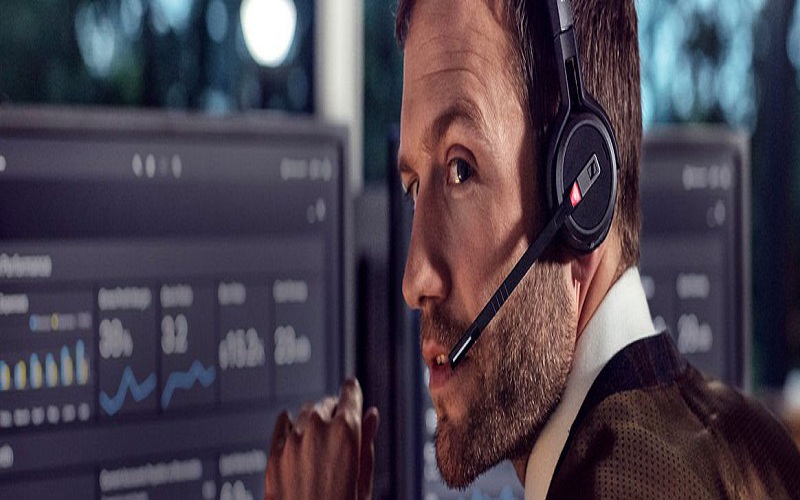Telemedicine has emerged as a transformative force in the healthcare sector, offering many benefits, from increased access to medical services to enhanced convenience for patients and healthcare providers. As this field continues to evolve, the role of advanced technology, particularly headsets, becomes increasingly significant. High-quality headsets, available through platforms like Business Headsets, are pivotal in ensuring clear communication and efficient interaction between patients and healthcare providers. This blog post explores how advanced headsets enhance telemedicine, highlighting their role in patient care, key features, real-world applications, and future potential.
The rise of telemedicine has fundamentally changed how healthcare is delivered. Through virtual consultations, patients can receive medical advice and treatment without travelling, saving time and resources. However, the success of telemedicine hinges on effective communication. Clear, uninterrupted audio is essential for accurate diagnosis and treatment. Advanced headsets are critical in facilitating this communication, ensuring patients and healthcare providers can hear and be heard clearly. This clarity is crucial, as even minor miscommunications can lead to significant issues in patient care.
High-quality audio is essential in telemedicine because it impacts various aspects of patient care. For instance, during virtual consultations, doctors need to listen carefully to patients’ descriptions of their symptoms. Any background noise or audio distortion can make understanding the patient’s concerns difficult, potentially leading to incorrect diagnoses or ineffective treatment plans. Advanced headsets equipped with noise-cancelling microphones help eliminate these distractions, allowing healthcare providers to focus entirely on the patient. Platforms like Business Headsets offer a range of products specifically designed to meet the stringent demands of telemedicine, ensuring optimal audio quality and reliability.
Comfort and reliability are essential features of medical headsets. Healthcare providers often wear headsets for extended periods, conducting back-to-back consultations throughout the day. Ergonomic designs with cushioned ear pads, adjustable headbands, and lightweight materials ensure that headsets remain comfortable during long shifts. Furthermore, headsets must be durable and reliable, capable of withstanding the rigours of daily use. Features such as long battery life and quick charging capabilities are also important, ensuring that headsets are always ready for use. Healthcare institutions can enhance the efficiency and comfort of their telemedicine services by investing in high-quality headsets from trusted providers like Business Headsets.
One of the key benefits of advanced headsets in telemedicine is the improvement in patient engagement and satisfaction. Clear, effective communication helps build trust between patients and healthcare providers. When patients feel heard and understood, they are more likely to engage actively in their treatment plans and follow medical advice. High-quality audio ensures patients can express their concerns without repeating themselves, reducing frustration and increasing satisfaction. Moreover, the ability to conduct consultations from the comfort of their homes makes patients more at ease, contributing to a more positive healthcare experience.
Real-world applications of advanced headsets in telemedicine are numerous and varied. For example, an extensive hospital network implemented noise-cancelling headsets from Business Headsets for their telemedicine services. The result marked improved audio clarity during consultations, leading to better patient outcomes and higher satisfaction rates. Healthcare providers reported fewer instances of miscommunication and a more streamlined consultation process. Another example is a mental health clinic adopting high-quality headsets for virtual therapy sessions. The clear audio allowed therapists to pick up on subtle vocal cues, enhancing their ability to support patients effectively. These case studies highlight the transformative impact of advanced headsets in telemedicine.
Despite the numerous benefits, there are challenges associated with implementing advanced headsets in telemedicine. One common issue is ensuring compatibility with existing medical software and communication platforms. Healthcare institutions must select headsets that integrate seamlessly with their current systems to maximise efficiency. Providing training for healthcare providers on how to use the new headsets effectively is also crucial. This training should cover essential operations, troubleshooting common issues, and best practices for maintaining audio quality during consultations. Platforms like Business Headsets often provide comprehensive support and resources to help institutions navigate these challenges.
The future of telemedicine holds exciting possibilities, with advanced headsets set to play a central role. Innovations such as AI-driven noise reduction, which automatically adjusts audio settings based on the environment, and spatial audio, which creates a more immersive listening experience, are poised to revolutionise telemedicine. These advancements will further enhance the clarity and effectiveness of virtual consultations, making it easier for healthcare providers to deliver high-quality care remotely. As technology continues to evolve, integrating these cutting-edge features into medical headsets will become increasingly important, ensuring that telemedicine remains a viable and effective mode of healthcare delivery.
Moreover, headsets’ potential in telemedicine extends beyond traditional consultations. For example, remote patient monitoring systems can use headsets to provide real-time audio feedback to patients, helping them manage chronic conditions more effectively. Virtual reality (VR) and augmented reality (AR) applications in telemedicine also benefit from high-quality audio, creating more immersive and interactive healthcare experiences. By staying ahead of these trends and investing in advanced headsets, healthcare institutions can ensure they are well-equipped to meet the future demands of telemedicine.
In conclusion, advanced headsets are revolutionising telemedicine by enhancing communication, improving patient engagement, and addressing everyday challenges. The importance of clear, compelling audio in virtual healthcare cannot be overstated, as it directly impacts the quality of patient care. By investing in high-quality headsets from providers like Business Headsets, healthcare institutions can ensure that their telemedicine services are efficient, reliable, and comfortable for patients and providers. As technology advances, headsets’ role in telemedicine will only become more significant, offering even greater enhancements and benefits for the future of healthcare delivery.
By focusing on these critical aspects, healthcare providers can harness the full potential of telemedicine, delivering superior patient care and ensuring that virtual consultations are as effective and engaging as in-person visits. The future of telemedicine is bright, and with the right tools, healthcare institutions can lead the way in this transformative field.

